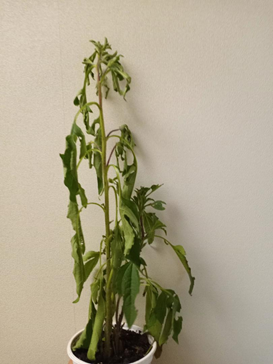Heat and Drought Stress
go.ncsu.edu/readext?811218
en Español / em Português
El inglés es el idioma de control de esta página. En la medida en que haya algún conflicto entre la traducción al inglés y la traducción, el inglés prevalece.
Al hacer clic en el enlace de traducción se activa un servicio de traducción gratuito para convertir la página al español. Al igual que con cualquier traducción por Internet, la conversión no es sensible al contexto y puede que no traduzca el texto en su significado original. NC State Extension no garantiza la exactitud del texto traducido. Por favor, tenga en cuenta que algunas aplicaciones y/o servicios pueden no funcionar como se espera cuando se traducen.
Português
Inglês é o idioma de controle desta página. Na medida que haja algum conflito entre o texto original em Inglês e a tradução, o Inglês prevalece.
Ao clicar no link de tradução, um serviço gratuito de tradução será ativado para converter a página para o Português. Como em qualquer tradução pela internet, a conversão não é sensivel ao contexto e pode não ocorrer a tradução para o significado orginal. O serviço de Extensão da Carolina do Norte (NC State Extension) não garante a exatidão do texto traduzido. Por favor, observe que algumas funções ou serviços podem não funcionar como esperado após a tradução.
English
English is the controlling language of this page. To the extent there is any conflict between the English text and the translation, English controls.
Clicking on the translation link activates a free translation service to convert the page to Spanish. As with any Internet translation, the conversion is not context-sensitive and may not translate the text to its original meaning. NC State Extension does not guarantee the accuracy of the translated text. Please note that some applications and/or services may not function as expected when translated.
Collapse ▲This article was written by Matthew Clay, 2021 NC State University Summer Intern for North Carolina Cooperative Extension in Lee County.
During the summer, high temperatures can result in heat and drought stress in plants. Heat stress is where the plant is unable to cool itself with transpiration and begins to wilt. This is a plant’s sign to show it is undergoing some stress. Drought contributes to wilt and stress because there is not enough water available to take up into the plant. When plants are stressed, the rate of photosynthesis and transpiration decreases to prevent further water loss.
Without transpiration driving water and nutrients up and into the plants, nutritional issues can occur. In the soil the nutrient solution provides the plant with the  essential nutrients it needs. Most modes of plant uptake of these nutrients are driven by the movement of water, which is why nutrient issues occur under drought stress. Adding more fertilizer will do nothing and be a waste of money because a plant will not be able to take up those extra nutrients. Also, a stressed plant may reach a permanent wilting point. When a permanent wilting point is reached, it is the point of no return, and a plant will not recover.
essential nutrients it needs. Most modes of plant uptake of these nutrients are driven by the movement of water, which is why nutrient issues occur under drought stress. Adding more fertilizer will do nothing and be a waste of money because a plant will not be able to take up those extra nutrients. Also, a stressed plant may reach a permanent wilting point. When a permanent wilting point is reached, it is the point of no return, and a plant will not recover.
There are several things as a homeowner you can do to help prevent heat and drought stress to your plants. First, choose plants that are drought resistant and can handle our hot dry summers. Second, practice water conservation methods, such as mulching plants to hold moisture and removing weeds to eliminate unwanted competition for moisture. Third, limit pruning during the summer to decrease stress to the plant. Finally, take notice of what works and what does not work for watering in order to allow for more efficient watering to prevent heat and drought stress. To learn more about heat and drought stress visit Dealing with Drought.
Matthew Clay is the 2021 NC State University Summer Intern with North Carolina Cooperative Extension in Lee County.




